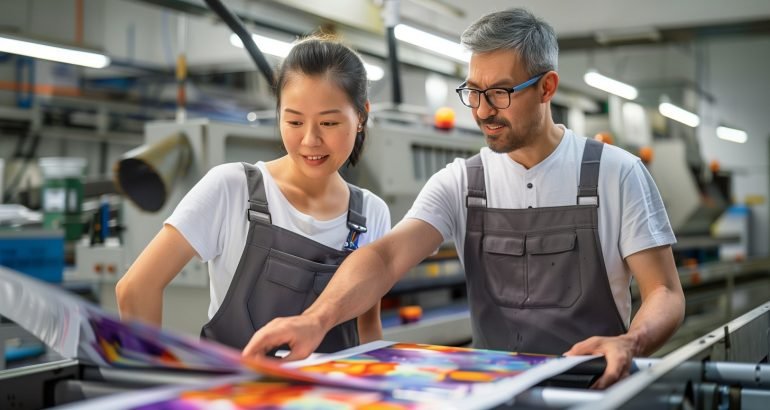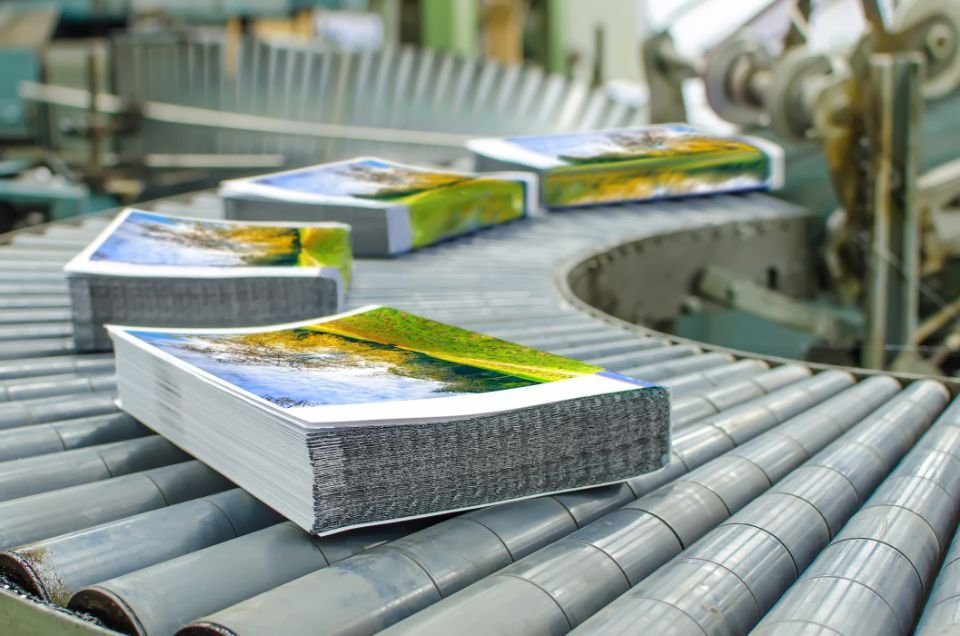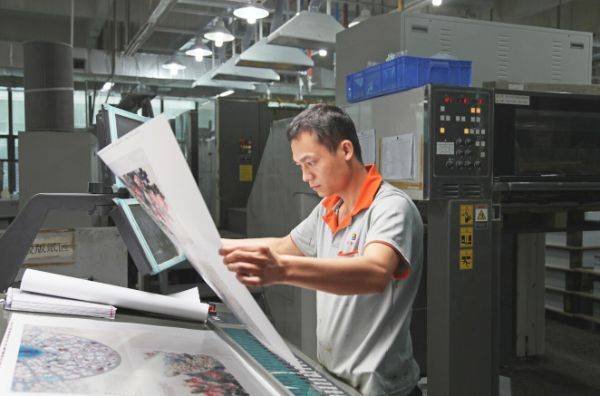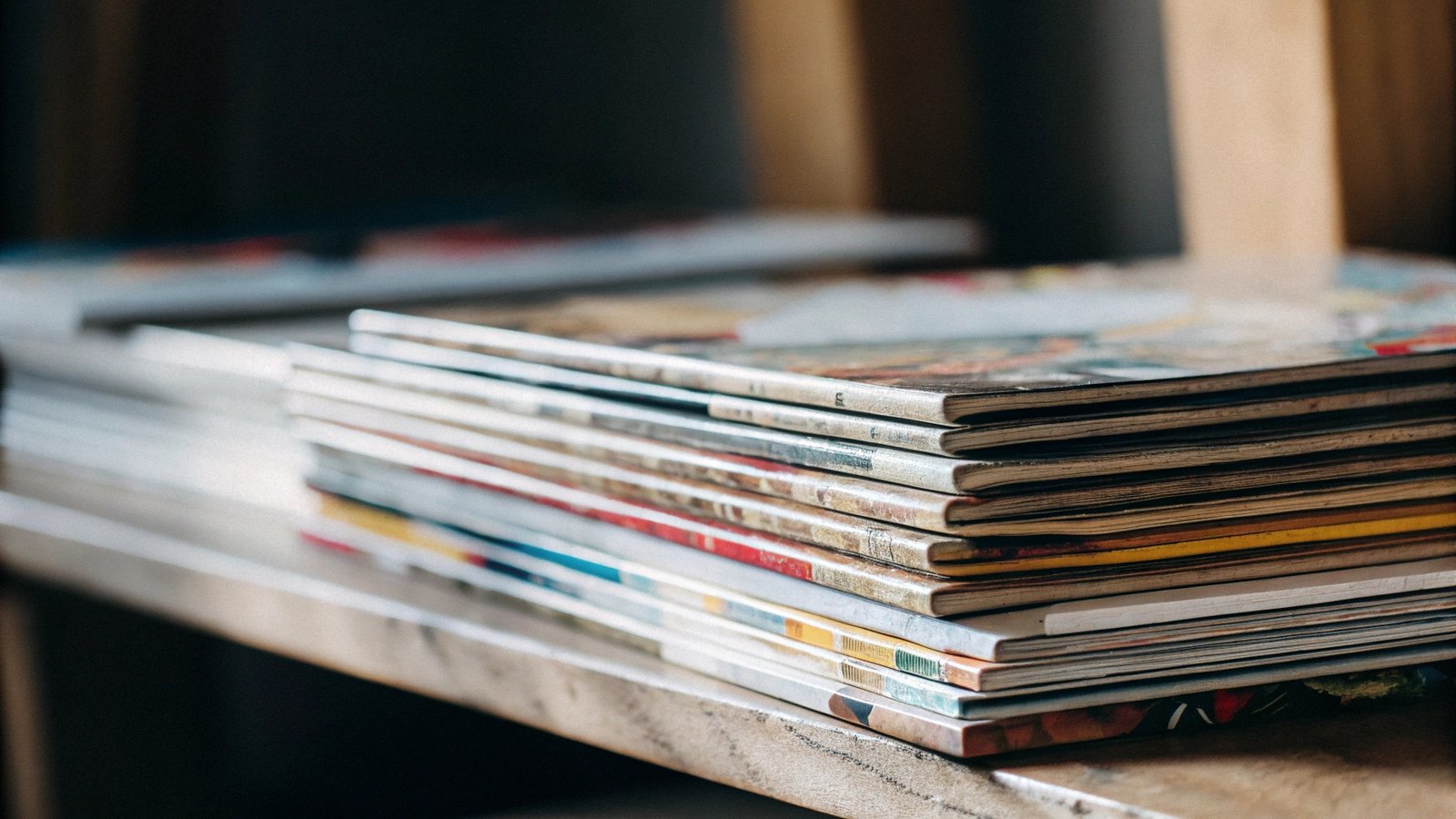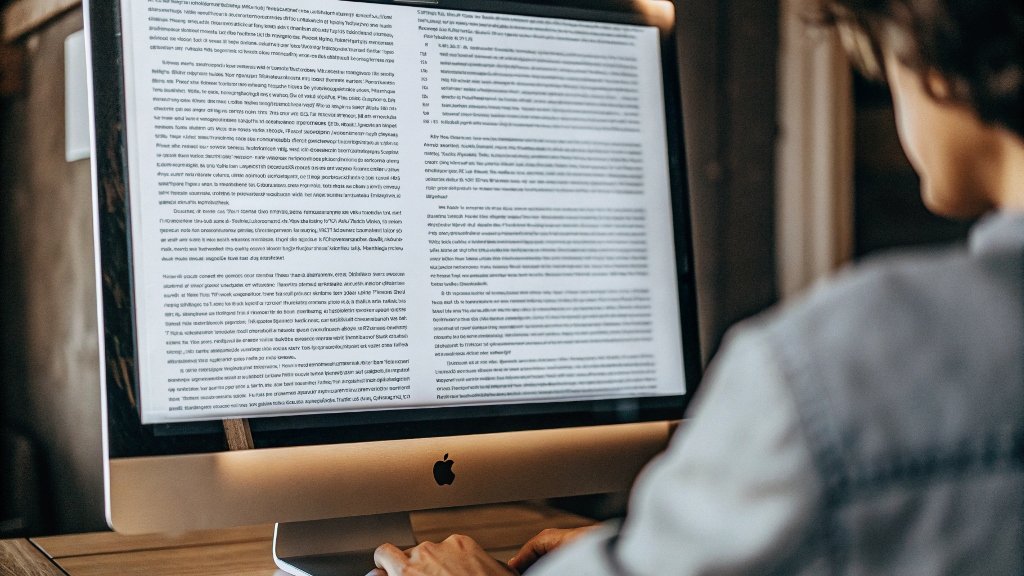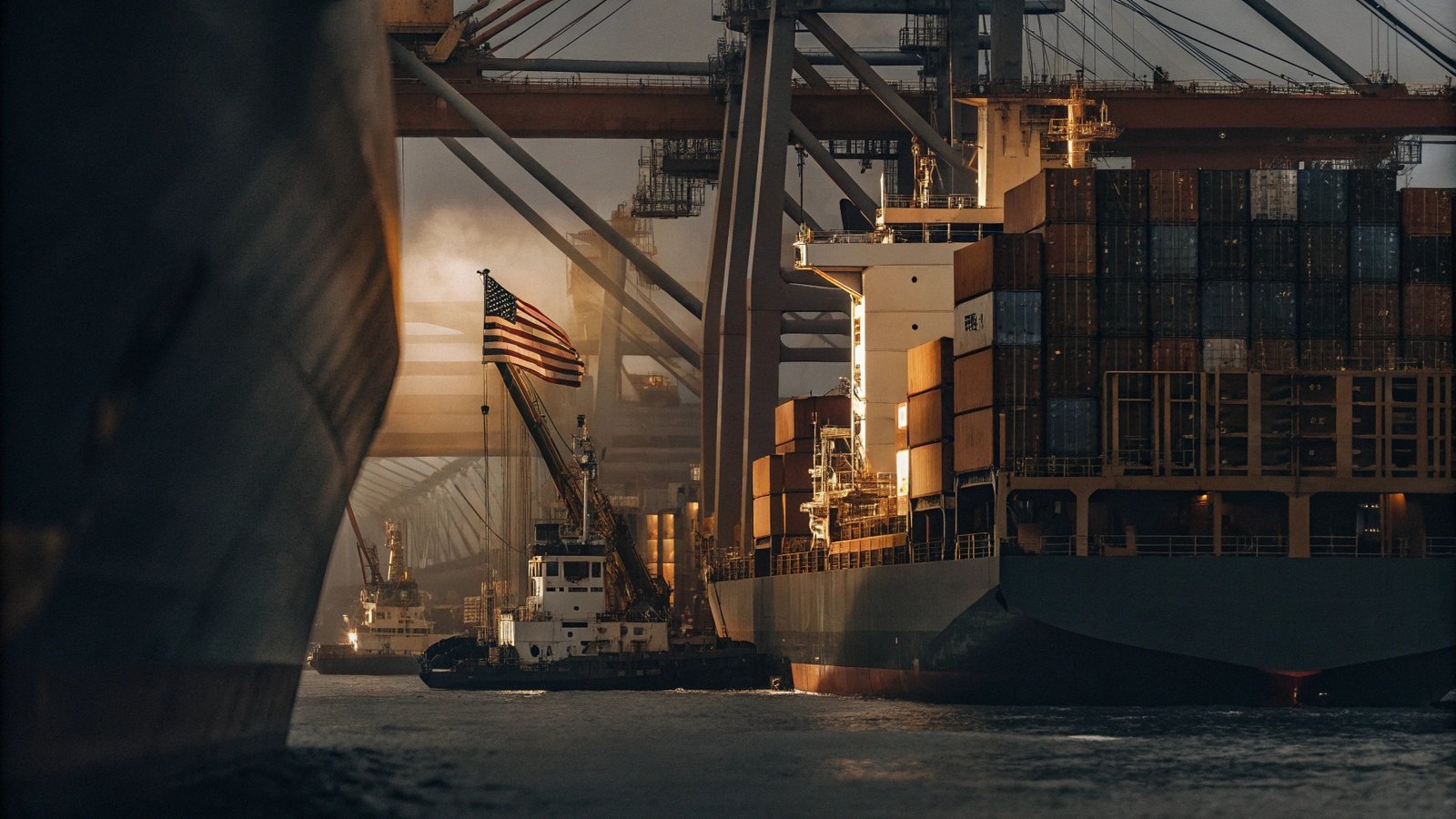High printing costs are squeezing your budget and limiting your vision. This makes every print run feel like a gamble, forcing you to compromise on quality or quantity.
Yes, for many publishers and authors, printing in China is an extremely wise choice. It offers significant cost savings, often up to 40%, especially for high-quality, complex projects. This is due to China’s large-scale manufacturing, advanced technology, and skilled workforce, making it a strategic global hub.
As someone who grew up surrounded by the hum of printing presses in my family’s business, I’ve seen the industry evolve dramatically. Now, as CEO of Huaxin Printing, I talk to publishers like Stephanie every day. She’s a Production Director with 20 years of experience, and her questions are the same ones I hear from many: "Is it really worth it? What are the risks?" The cost savings are tempting, but you need the full picture. Let’s break down the key questions so you can decide if printing in China is the right move for you.
Why are most books printed in China?
You see "Printed in China" on so many different books. You might wonder why publishers worldwide choose this option, despite the distance and logistics. The answer is a powerful mix of cost, scale, and specialized skill.
Most books are printed in China because of the immense cost advantages, driven by the country’s huge manufacturing scale and efficient supply chains. This combination of advanced equipment and skilled, affordable labor results in high-quality books at a fraction of the cost found in the US or Europe.
The reasons go deeper than just a single price tag. It’s about an entire ecosystem built for efficiency. Over my 37 years in this business, I’ve watched China become a global leader not by cutting corners, but by investing heavily in the three pillars of modern manufacturing.
The Power of Scale
The concept of "economy of scale1" is the biggest factor here. Chinese printers run massive operations that serve a global market. This means we can purchase paper, ink, and other materials in enormous quantities, getting much better prices than smaller, local printers. This complete supply chain, all located within close proximity, reduces transportation costs and delays. The savings from this huge, efficient system are passed directly on to you, the publisher.
Advanced Manufacturing
There’s a common misconception that lower cost means older technology. The opposite is often true. To compete globally, top Chinese printers have invested millions in the latest and most advanced printing and binding equipment from world-class manufacturers like Heidelberg1 and Komori2. At Huaxin Printing, our state-of-the-art presses ensure that every book, from the first copy to the last, has consistent, vibrant color and perfect binding. This technology delivers both quality and speed.
Skilled Workforce
Printing is still a craft that requires human expertise, especially for complex jobs. China has a vast and highly skilled workforce specializing in all aspects of book production, from prepress checks to intricate hand-finishing for special editions. This expertise is particularly valuable for projects that local printers might consider too difficult or expensive to produce.
| Factor | Printing in China | Printing Locally (US/EU) |
|---|---|---|
| Per-Unit Cost | Significantly Lower | Higher |
| Manufacturing Scale | Massive | Smaller/Niche |
| Equipment | Advanced & Efficient | Varies, can be older |
| Labor Expertise | High for complex jobs | High, but more expensive |
What types of books fit best to print in China?
Your new book has beautiful color illustrations or unique special finishes. But local printers are quoting prices that make your project seem impossible. China specializes in producing these high-quality, complex books at an affordable price point.
Books with high color demands, like children’s books, art books, and cookbooks, are ideal for printing in China. Projects requiring special finishes, hardcover binding, or intricate handwork also benefit greatly from the cost-effective expertise available there. The more complex the project, the better the fit.
While almost any book can be printed in China cost-effectively, certain types see the most dramatic benefits. If your book falls into one of these categories, the value proposition becomes undeniable. I always tell my clients to think about complexity; if your book is more than just black text on plain paper, you’re in the right place.
Color-Intensive Books
This is where Chinese printers truly shine. Children’s books, cookbooks, photography books, and art books all depend on perfect, consistent color to succeed. Printers like us invest heavily in color management systems1 and G7 Master qualification2 to ensure that the colors on the page exactly match the artist’s or photographer’s vision. We understand how to make reds pop and skin tones look natural, a skill honed over millions of printed pages for publishers around the world.
Books with Special Finishes
Do you want your cover to have foil stamping1, embossing2, or a unique die-cut shape? These special treatments can make a book stand out on the shelf, but they are often labor-intensive. In the US or Europe, the cost of this handwork can be prohibitive. In China, the combination of skilled labor and specialized equipment makes these beautiful finishes affordable, allowing independent authors and smaller publishers to create books that look just as premium as those from major publishing houses.
High-Volume and Hardcover Books
The logic is simple: the more you print, the more you save. The economies of scale I mentioned earlier have the biggest impact on large print runs. Additionally, hardcover books, which require more steps and labor for casing-in and binding, are significantly cheaper to produce. This is why you see so many hardcover bestsellers, from novels to textbooks, being printed in China.
Can I print any types of books I want in China?
You have a finished manuscript and China seems like the perfect printing solution. But you have a nagging worry: could your book’s content run into unexpected restrictions or censorship issues? It’s crucial to understand the content regulations before you proceed.
No, not all books can be printed in China. The government has regulations on content, especially concerning political sensitivity, religion, pornography, and materials deemed culturally inappropriate. It’s vital to discuss your book’s content with your Chinese printer beforehand to ensure it’s permissible for printing.
This is a very important and practical question that every publisher needs to ask. Transparency is key. As a printer, we are legally responsible for the content we produce, even if it’s for export. Therefore, a review process is a standard and necessary part of our workflow. The goal is simply to ensure a smooth, problem-free process for everyone.
Understanding the Content Review
When you submit your files, they will be reviewed to ensure they don’t violate China’s laws regarding publications. This isn’t about judging your work’s literary merit; it’s a procedural check. A good printing partner will be upfront about this process. At Huaxin Printing, we see it as part of our job to guide our clients. We can often identify potential issues early on and suggest minor edits (like to a map, for example) that will satisfy regulations without compromising your book’s integrity.
Common Restricted Categories
While there are nuances, some topics are consistently flagged.
- Political Content: Anything directly critical of the Chinese government or its leaders is not allowed. Maps are often scrutinized to ensure they align with China’s territorial claims.
- Religious Texts: While printing some religious material is possible, mass production of certain Bibles or other sacred texts for proselytizing purposes can be restricted.
- Adult Content: Pornography or sexually explicit material is strictly forbidden.
- "Culturally Harmful" Content: This is a broader category that can include excessive violence, materials that promote cults or superstitions, and gambling.
The best approach is to be open. Share your manuscript with your printer and ask directly. An experienced printer has seen it all and can give you a clear "yes" or "no," or suggest a path forward.
Are books printed in China subjected to the tariff in US?
You’ve heard a lot about the US-China trade war and tariffs. You’re worried that these extra customs duties will completely erase the savings you gain from printing in China. Fortunately, for most books, this is not a major concern right now.
Currently, most books and other printed materials imported from China into the US are NOT subject to the Section 301 tariffs. Books generally fall under a tariff-exempt customs category, so the price your printer quotes is the price you can expect, outside of standard shipping costs.
The topic of tariffs can be confusing, but for book publishers, the news has been consistently good. While many products have been affected by the Section 301 tariffs imposed by the U.S. government, printed books have so far been spared. This is a huge relief for the publishing industry.
The Section 301 Tariffs Explained
These tariffs are specific duties the US government placed on a long list of goods imported from China. The goal was to address trade imbalances. However, these lists of goods are very specific, identified by their Harmonized Tariff Schedule (HTS) codes1. If a product’s HTS code is not on the list, the tariff does not apply. To make it short, as for now, general books, including novels and textbooks, have a 7.5% tariff under Section 3012, with no additional 30% IEEPA3* tariff. Children’s picture books and religious texts remain exempt from tariffs at 0%.
Why Books Are (Mostly) Exempt
Historically, books, newspapers, and other educational materials have been given special consideration in trade policy to promote the free exchange of ideas and information across borders. This long-standing principle has helped keep books off the tariff lists. The HTS codes that apply to most printed books (found in Chapter 491 of the schedule) are not currently targeted by the Section 3012 duties.
How to Stay Informed
While the situation has been stable for years, trade policies can change. The best practice is to always confirm with a reliable source. You can consult a US customs broker or check the official Harmonized Tariff Schedule1 website. A good printing partner should also be able to help. At Huaxin Printing, we manage logistics and customs clearance for our clients every single day. We stay on top of these regulations to ensure there are no surprises for our customers when their shipment arrives.
Conclusion
Printing in China is a smart, cost-effective choice for many books, especially complex, color-intensive projects. Just be aware of content rules and partner with an experienced printer for guaranteed success.
-
Understanding the Harmonized Tariff Schedule is crucial for navigating trade regulations effectively. ↩ ↩ ↩ ↩ ↩ ↩ ↩
-
Understanding Section 301 is crucial for grasping its impact on trade and educational resources, especially in a global context. ↩ ↩ ↩ ↩ ↩
-
Understanding IEEPA is crucial for grasping its impact on trade policies and tariffs, especially for businesses and consumers. ↩

